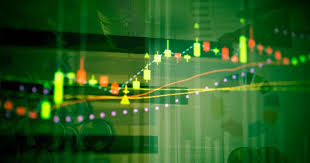The Stochastic Indicator is a technical analysis tool used to measure price momentum and identify buy or sell signals in trading. Developed by George Lane in the 1950s, this indicator is popular across various markets including forex, stocks, and commodities. This article will provide a detailed explanation of how the Stochastic Indicator works, its uses, and how to read it.
What is the Stochastic Indicator?
The Stochastic Indicator is a type of momentum oscillator that compares the most recent closing price to the range of prices over a specified period. Its purpose is to indicate when the market is overbought (excessively bought) or oversold (excessively sold), and to help predict the direction of long-term trends.
- Basic Principles:
- Calculation: The Stochastic Oscillator is calculated based on the difference between the current closing price and the lowest and highest prices over a certain period, usually 14 days.
- Sensitivity: This indicator is highly sensitive to price movements and often fluctuates around extreme levels.
- Uptrend: In an uptrend, the closing price tends to approach the previous high.
- Downtrend: In a downtrend, the closing price tends to approach the previous low.
George Lane, the creator of the Stochastic Indicator, relied on three main technical tools in his trading: the Stochastic Indicator, trend lines, and Fibonacci Retracement levels. This demonstrates that while the Stochastic Indicator is powerful, combining it with other tools can enhance its accuracy.
Functions and Uses of the Stochastic Indicator
The Stochastic Indicator serves several key functions:
- Identifying Recent Closing Prices: Helps determine if the current price is near the highest or lowest prices within the specified period.
- Buy and Sell Signals: Identifies overbought (level 80) and oversold (level 20) conditions in the market.
- Predicting Long-Term Trends: Aids in assessing trend strength and potential trend reversals.
How to Read the Stochastic Indicator
Overbought and Oversold Conditions:
- Overbought Level: The indicator is considered overbought when it is above the 80 level. This suggests that the price may be too high and could potentially decline.
- Oversold Level: The indicator is considered oversold when it is below the 20 level. This suggests that the price may be too low and could potentially rise.
- Note: Do not enter trades solely based on extreme levels. Market conditions can remain overbought or oversold for extended periods. Look for confirmation signals before trading.
Trading Entry Signals:
- %K and %D Lines: The Stochastic Oscillator consists of two lines, %K and %D.
- %K: The main line that represents the relative closing price.
- %D: The signal line, which is a moving average of %K.
- Buy Signal: Occurs when the %K line crosses above the %D line.
- Sell Signal: Occurs when the %K line crosses below the %D line.
- Example: In platforms like MetaTrader 4, %K is usually shown in green and %D in red. A buy signal is when %K crosses %D from below.
Divergence:
- Bullish Divergence: Happens when the price makes a lower low, but the Stochastic Indicator makes a higher low. This could signal a potential reversal to a bullish trend.
- Bearish Divergence: Occurs when the price makes a higher high, but the Stochastic Indicator makes a lower high. This could signal a potential reversal to a bearish trend.
- Characteristics: Observe the differences between peaks (highs) and troughs (lows) on the price chart and the Stochastic Indicator. Divergence that strengthens or weakens can provide clues about market momentum.
The Stochastic Indicator is a powerful technical analysis tool for measuring price momentum and identifying overbought or oversold conditions. While highly sensitive, it is not always 100% accurate. Its effectiveness can be enhanced by combining it with other technical tools such as trend lines or Fibonacci levels. For beginner traders, understanding how to read and use the Stochastic Indicator correctly can improve their ability to make better trading decisions.













.png)
.png)
.png)
.png)



